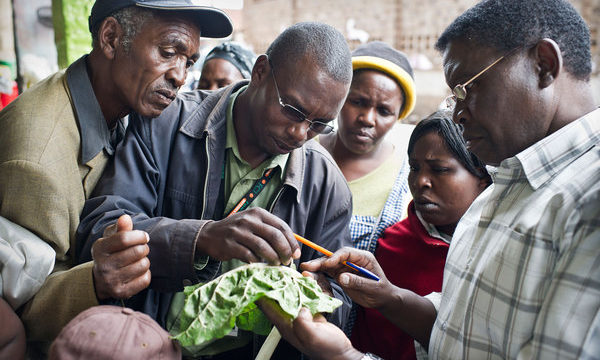Recent research highlights why the green peach aphid (Myzus persicae) is one of the most successful crop pests. These findings will help further the development of effective management and control measures which will ultimately reduce worldwide crop losses.
The green peach aphid is one of the most challenging crop pests, living on hundreds of host plants in over 40 families. This makes it an impressive generalist compared to many other aphids, a large number of which are only adapted to survive on one species. Key crops impacted by this pest include sugar beet, beans, potato, tomato and oilseed rape.
So how can it be such a wide ranging generalist? Recent research, carried out by the Earlham Institute (EI) and John Innes Centre (JIC) in the UK, has found that its ability to survive on so many hosts is largely down to its genetic plasticity (Mathers et al., 2017). After just two days, scientists were able to see that genes responsible for helping aphids adjust to different plants rapidly increased or decreased in activity when an individual was moved to a different host.
Interestingly, it seems that many of the genes involved are not specific to this species of aphid, but that the green peach aphid is just particularly well adapted to adjusting to the expression of the key genes.
Not only can it adapt well to different hosts, the pest transmits over 100 plant virus diseases, including Beet western yellows virus, Bean leaf roll virus and Potato leaf roll virus. Losses caused by these plant diseases can be very high – sugarbeet losses due to beet yellows can be up to 50%. Furthermore, the green peach aphid has developed resistance to over 70 different pesticides, making it difficult to control.
Then there’s its ability to reproduce prolifically. Females can give birth to females without mating with a male (clonal reproduction). Consequently green peach aphids can have up to 30 generations a year (Texas A&M University, 2017).
All in all, it’s no wonder that the green peach aphid is such an incredibly successful pest, unfortunately causing major widespread damage every year. This latest research is a significant step towards understanding how the pest is so successful, paving the way for more effective management and control methods.
For more information, read How to be a successful pest: lessons from the green peach aphid by the Earlham Institute.
You can also find out information regarding the green peach aphid on our Plantwise Knowledge Bank.
CABI, 2017. Green peach aphid (Myzus persicae). In: Plantwise Knowledge Bank. Wallingford, UK: CAB International. http://www.plantwise.org/knowledgebank/datasheet.aspx?dsid=35642
Earlham Institute, 2017. How to be a successful pest: lessons from the green peach aphid. UK: Earlham Institute. http://www.earlham.ac.uk/how-be-successful-pest-lessons-green-peach-aphid
Mathers TC, Chen Y, Kaithakottil G et al., 2017. Rapid transcriptional plasticity of duplicated gene clusters enables a clonally reproducing aphid to colonise diverse plant species. Genome Biology, 18:27.
Texas A&M University, 2017. Green Peach Aphid. In: Texas A&M Agrilife Extension Series. Texas, USA: Texas A&M University. http://texasinsects.tamu.edu/aimg103.html
1 Comment
Leave a Reply
Related News & Blogs
Cabbage disease mystery in Ghana
Cabbage © iStock images Cabbage is an important crop in Ghana where it grows all year round, right across the country. It is mainly grown for commercial production in Southern Ghana, in Akwapim and Kwahu areas and in the moist high elevations around Ta…
22 February 2017



[…] February 15, 2017Kate Dey […]